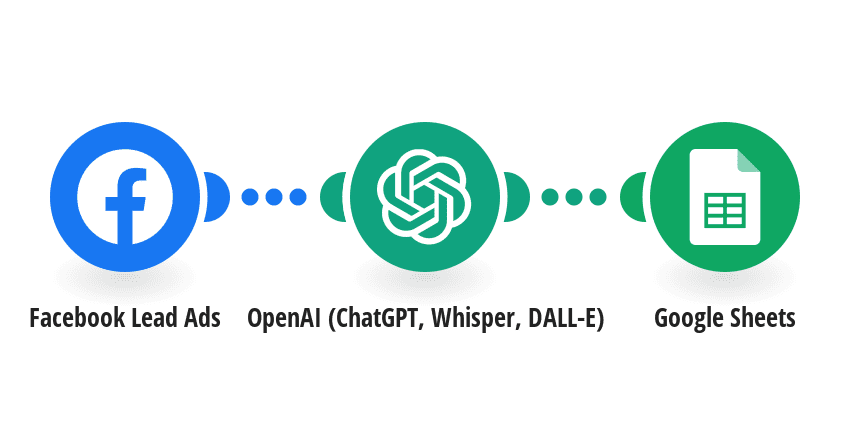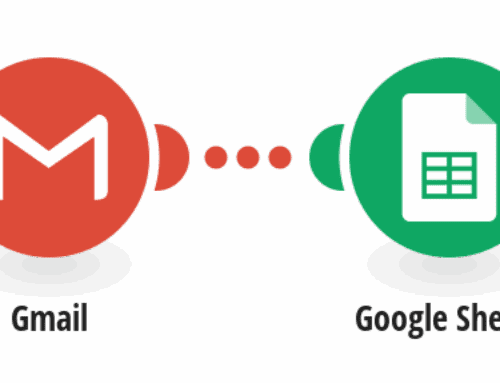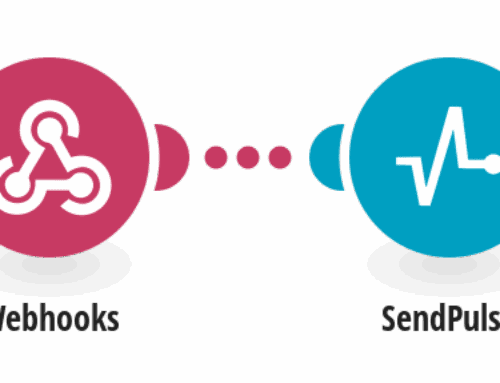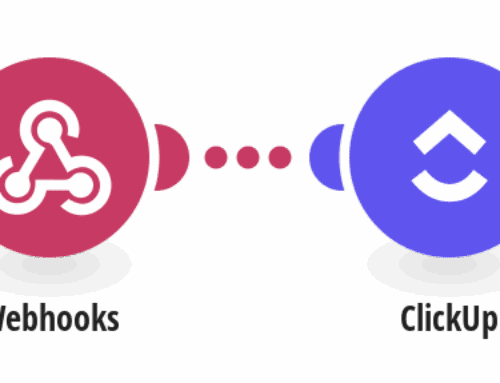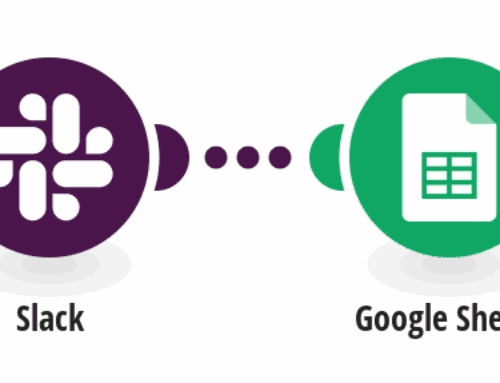Personalize Introduction Messages with ChatGPT
In today’s fast-paced digital world, personalizing communication is crucial for engaging with potential leads. By utilizing advanced AI like ChatGPT, businesses can craft tailored introduction messages that resonate with their audience on platforms like Facebook. This article delves into how you can leverage ChatGPT to enhance your communication strategy, and how to organize these interactions efficiently using Google Sheets.
Understanding the Role of ChatGPT in Personalization
ChatGPT, developed by OpenAI, is a powerful tool for generating human-like text responses. Its ability to understand context and provide relevant responses makes it ideal for creating personalized messages. Imagine having a virtual assistant that not only communicates seamlessly but also adapts its style to fit your brand and audience preferences. That’s what ChatGPT offers – a personalized approach to digital communication.
One major advantage of using ChatGPT is its versatility. It can be integrated into various platforms, making it a versatile option for businesses looking to streamline their communication processes. Whether you’re reaching out to new leads or following up with existing customers, ChatGPT ensures that your message is both timely and relevant, making recipients feel valued and understood.
Leveraging ChatGPT for Facebook Lead Engagement
Engaging with leads on Facebook requires more than just sending a generic welcome message. With ChatGPT, you can tailor each interaction based on the lead’s interests, demographics, and previous interactions. This level of personalization is key to building lasting relationships with your audience. The process begins with capturing lead information through Facebook ads or contact forms, setting the stage for a customized engagement strategy.
Once you have basic information about a lead, ChatGPT can be used to generate an introductory message that feels personal and meaningful. By incorporating specific details shared by the lead, your messages resonate more and lead to higher engagement rates. Think of ChatGPT as your digital concierge, ensuring each interaction is memorable and impactful.
Creating Engaging Introductory Messages
The initial interaction with a potential lead sets the tone for future engagements. By using ChatGPT, businesses can create introductory messages that are not only informative but also engaging. These messages should reflect the brand’s voice while addressing the lead’s unique attributes. The goal is to make the lead feel appreciated and interested in what your business offers.
To maximize the effectiveness of these messages, consider including a call-to-action that encourages further interaction. Whether it’s inviting the lead to explore your services or participate in a survey, an actionable step keeps the conversation going. An engaging introductory message is the first step toward converting a lead into a loyal customer.
Organizing Lead Information in Google Sheets
After crafting personalized messages, it’s essential to store and organize lead information systematically. Google Sheets acts as a convenient and efficient tool for managing this data. By maintaining a structured record of interactions and lead details, businesses can easily track engagement metrics and adjust their strategies accordingly.
The real magic happens when you integrate Google Sheets with ChatGPT. Automating the storage of new lead details ensures that no information is missed and allows for seamless updates as new interactions occur. This automated process not only saves time but also ensures that your team has access to up-to-date information, facilitating better decision-making.
Integrating ChatGPT with Google Sheets
Integrating ChatGPT with Google Sheets streamlines the lead management process. By automating data entry and communication, your team can focus more on strategy and less on manual tasks. This integration allows for real-time updates, ensuring that every team member has access to the latest information without any delay.
To implement this system, businesses can use automation tools like Make.com. These platforms offer templates that simplify the integration process, allowing you to connect ChatGPT with your Google Sheets effortlessly. Through automation, businesses can maintain a consistent flow of information and focus on what truly matters – nurturing leads into valued customers.
Steps to Implementing the Integration
Implementing ChatGPT and Google Sheets integration involves a few strategic steps. First, identify the key data points you want to collect from your Facebook leads. This could include names, email addresses, and other pertinent demographic information. Once identified, set up your Google Sheet to include these fields, ensuring a structured layout for easy analysis.
Next, use an automation platform like Make.com to link ChatGPT with your newly created Google Sheet. The platform provides easy-to-use templates that guide you through the integration process. With these tools, you can automate message personalization and data collection, creating a seamless workflow that enhances your overall efficiency.
Benefits of Automation in Lead Management
Automation revolutionizes lead management by significantly reducing manual effort and errors. By integrating ChatGPT with Google Sheets, businesses can automatically personalize communications and organize lead information without lifting a finger. This seamless process allows teams to devote more time to strategic planning and less to administrative tasks.
Moreover, automation ensures consistency in communication. Each lead receives a timely and personalized response, improving their experience and increasing the likelihood of conversion. Automated systems also facilitate data-driven decision-making by providing a comprehensive overview of lead interactions and engagement levels.
Ensuring Data Security and Privacy
Handling sensitive lead information requires stringent data security and privacy measures. When integrating ChatGPT with Google Sheets, businesses must ensure compliance with data protection regulations like GDPR. This includes obtaining explicit consent from leads before collecting and storing their data.
Furthermore, implementing robust encryption methods protects stored data from unauthorized access. Regular audits of your data handling processes can also help identify potential vulnerabilities, ensuring that lead information remains safe at all times. By prioritizing data security, businesses can foster trust and build strong relationships with their audience.
Concluding Thoughts on Personalizing Lead Communication
In conclusion, personalizing communication with ChatGPT offers a unique opportunity for businesses to connect with their audience on a deeper level. By automating the personalization process and organizing data efficiently in Google Sheets, businesses can enhance their lead management strategies and achieve better engagement results.
By leveraging these technologies, businesses not only improve the quality of their interactions but also position themselves as responsive and customer-focused. Embracing AI-driven personalization and organization tools is a smart move for any business looking to thrive in today’s competitive digital landscape.
FAQs
How do I get started with ChatGPT for lead communication?
To get started with ChatGPT, you’ll need to set up an account with OpenAI and choose a plan that fits your needs. From there, you can explore integration options with platforms like Facebook and Google Sheets using automation tools.
What are the benefits of using Google Sheets for organizing lead data?
Google Sheets provides a flexible and accessible platform for managing and organizing lead data. It allows for real-time collaboration, easy data sorting, and seamless integration with other tools, enhancing your data management capabilities.
Can ChatGPT handle multiple language preferences for leads?
Yes, ChatGPT can be used to create messages in multiple languages, catering to a diverse audience. This capability helps businesses expand their reach and engage effectively with leads from different linguistic backgrounds.
How secure is my data when using automation platforms?
Reputable automation platforms prioritize data security and comply with international data protection standards. It’s important to verify the platform’s security features and ensure they align with your business’s data privacy requirements.
Is there a limit to the number of leads I can manage with this integration?
The number of leads you can manage largely depends on the capacity of your Google Sheets and the specifics of your automation platform’s plan. Most solutions offer scalable options to accommodate growing lead databases.

